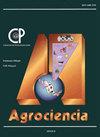CHARACTERIZATION OF THE RAMON TREE SEED (Brosimum alicastrum Swartz.) AS A POTENTIAL FOOD SOURCE
IF 0.5
4区 农林科学
Q4 AGRICULTURE, MULTIDISCIPLINARY
引用次数: 0
Abstract
The main objective of this work was to study the physical, chemical, and functional properties of the seed of the Ramon tree (Brosimum alicastrum Swartz) to evaluate its potential application in the elaboration of food products of high nutritional value. The results were compared with other seeds marketed internationally through an a posteriori comparative study of means. Ramon seed yielded 43.99 % of the dietary fiber, with energy value of 183.02 kcal per 100 g seed, cation exchange of 0.0015 meq [H+] g-1 seed, and uptake of organic molecules of 0.91 g oil g-1 seed. Trolox equivalent antioxidant capacity had a value of 0.88 mg Trolox g-1 of seed. The antioxidant activity of the seed (IC50) was 1.602 mg mL-1, while the tree leaf had an IC50 of 0.618 mg mL-1. The content of total phenols and flavonoids was also determined, resulting in 154 mg of gallic acid per 100 g of seed and 72.14 mg of catechin per 100 g of seed, respectively. To evaluate its capacity to produce high-nutritional-value foods, the biscuit test was carried out with Ramon seed whole meal flour, obtaining an expansion factor of 62.8. All the aforementioned tests were performed in triplicate, and the Student’s t-test was used for the comparison of means between treatments. The hypothesis of the present work was demonstrated since the seed of the Ramon tree represents an alternative as a functional food, since physical, chemical, and functional properties comparable to other seeds of recognized nutritional value were observed.雷蒙树种子(Brosimum alicastrum Swartz.)的表征作为潜在的食物来源
本研究的主要目的是研究拉蒙树种子(Brosimum alicastrum Swartz)的物理、化学和功能特性,以评估其在高营养价值食品加工中的潜在应用。通过方法的后验比较研究,将结果与国际上销售的其他种子进行了比较。拉蒙籽的膳食纤维产量为43.99%,每100 g籽能值为183.02 kcal,阳离子交换量为0.0015 meq [H+] g-1,有机分子吸收量为0.91 g油g-1。Trolox当量抗氧化能力为0.88 mg Trolox g-1。种子的IC50为1.602 mg mL-1,叶片的IC50为0.618 mg mL-1。测定了总酚和总黄酮的含量,每100 g种子中没食子酸含量为154 mg,儿茶素含量为72.14 mg。为评价其生产高营养价值食品的能力,用拉蒙籽全麦粉进行了饼干试验,膨胀系数为62.8。上述所有检验均为三次重复,并采用学生t检验进行处理间均值比较。本研究的假设得到了证明,因为拉蒙树的种子代表了一种功能性食品的替代品,因为观察到与其他公认的营养价值种子相当的物理、化学和功能特性。
本文章由计算机程序翻译,如有差异,请以英文原文为准。
求助全文
约1分钟内获得全文
求助全文
来源期刊

Agrociencia
农林科学-农业综合
CiteScore
0.50
自引率
33.30%
发文量
51
审稿时长
18-36 weeks
期刊介绍:
AGROCIENCIA is a scientific journal created and sponsored by the Colegio de Postgraduados. Its main objective is the publication and diffusion of agricultural, animal and forestry sciences research results from mexican and foreign scientists. All contributions are peer reviewed. Starting in the year 2000, AGROCIENCIA became a bimonthly and fully bilingual journal (Spanish and English versions in the same issue). Since 2007 appears every month and a half (eight issues per year). In addition to the printed issues, the full content is available in electronic format.
 求助内容:
求助内容: 应助结果提醒方式:
应助结果提醒方式:


